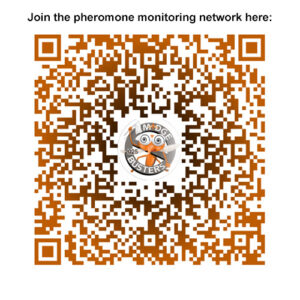The annual Wheat Midge Survey follows wheat midge populations in Alberta and Saskatchewan. Last year, wheat midge populations increased significantly compared to the 2023 survey in Saskatchewan, while pest pressure in Alberta was lower last year.
While populations were notably lower in Alberta, growers across the Prairies are reminded that a resurgence of wheat midge populations can occur, especially if there is a higher-than-normal rainfall in May and June.
No matter the pest forecast, field-to-field variations can be considerable, making it important for growers to assess their own risk based on indicators that are specific to their farm. These can include midge downgrading in previous wheat samples (a clear indication of midge risk in fields), scouting results and pheromone trapping numbers (high adults midge numbers in June and July) and in-season notices from the Prairie Pest Monitoring Network.
Survey results
Last year, a total of 265 samples were taken in Alberta and 322 samples were collected in Saskatchewan. These sample results are used to predict midge density based on viable midge larvae, and the overall intention of the survey is to provide a regional representation of viable wheat midge populations present in the fall of 2024 that can help growers prepare for the 2025 growing season.
2024 Wheat Midge Survey Maps are available for Alberta and Saskatchewan
While several factors influence the overwintering survival of the midge, the surveys and maps provide a general picture of existing densities and the potential for infestation in 2025. Weather conditions, specifically temperature and moisture will ultimately determine the extent and timing of midge emergence during the growing season.
Plan ahead
Growers are encouraged to review the survey results and plan ahead for the 2025 growing season. A pheromone trap in your field will alert you to the emergence of wheat midge in your field. Scan the QR code below to sign up to receive one and report your numbers to #midgebusters monitoring project run by Dr. Tyler Wist. It’s important to remember that growers should never discount the occurrence of wheat midge, even in regions that are anticipated to have low levels. Favourable environmental conditions, particularly timely rains prior to the end of May, can still promote larval development and the emergence of adults in late June or early July.
Several factors will influence the 2025 wheat midge population. As always, the most important factor is that at least 25 mm of precipitation prior to the end of May is required for proper development. Drier conditions with lower moisture levels will reduce the emergence of adults, but emergence can still be delayed, extended or erratic and may not coincide with the susceptible stage of the wheat crop in instances of poor rainfall.

